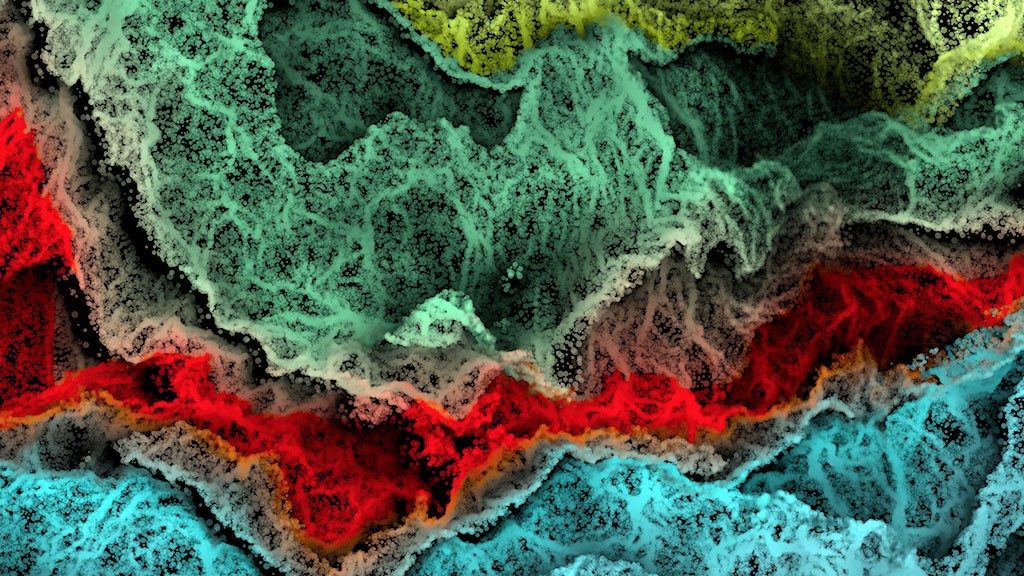CURATOR Robert Leonard
UK artist duo Ruth Jarman and Joe Gerhardt are Semiconductor. Assisted and informed by access to scientific data and technology, their visually spectacular, intellectually engaging video projects delve into unseen and unseeable worlds, making the invisible visible. Many of their works have developed out of fellowships at science facilities—places like NASA, CERN, and the Smithsonian.
Semiconductor’s works are not just informative, they’re beautiful, presenting information in an affective way. Take Earthworks (2016). This five-channel computer-generated animation processes seismic data to represent the folding, faulting, and forging of the land. The activity is sped up, encompassing millennia in moments. Represented in fauvist eye-candy colours, earthly strata well-up as marbled waves, dwarfing us. The experience is immersive and entertaining. (This piece has local relevance; it includes data from the 2016 Kaikoura quake.)
Semiconductor’s subjects range from the ultrabig to the ultrasmall, from celestial activity—the surface of the Sun—to the trajectories of subatomic particles.
Brilliant Noise (2006) mines the data vaults of solar astronomy. Usually cleaned up for public consumption, source images have been left in their glitchy raw state. The disruptive rain of visual noise is enjoyed as another level of information—an index of cosmic rays. The soundtrack is made by translating image intensities into audio.
Through the AEgIS (2017) is a space/time-lapse video. Pions, protons, and nuclear fragments flying out from ‘annihilation sites’ ionise a photographic plate. Using a special microscope with a super-shallow depth of field, this plate is ‘mined’ in two-micron steps, revealing the particles’ trajectories.
While celebrating the artistic capacity of scientific imaging technologies to serve up a new brand of sublime, Semiconductor also invite us to consider what might be at stake in our easy seduction.
–
Earthworks was commissioned by SónarPLANTA and produced by Advanced Music.


































